Este projeto mostra como implementar uma implementação parte do Glassware que demonstra a principal funcionalidade da API Google Mirror.
Para ver uma demonstração completa do projeto de início rápido, acesse https://glass-python-starter-demo.appspot.com. Caso contrário, continue lendo para saber como implantar sua própria versão.
Pré-requisitos
SDK do App Engine para Python - O projeto de início rápido do Python é implementado com o App Engine. Você precisa o SDK do App Engine para Python para desenvolver e implantar o projeto. Execute o instalador, se apropriado para sua plataforma, ou extraia o arquivo ZIP em um lugar conveniente.
Como criar uma instância do Google App Engine
Você precisará hospedar o projeto de início rápido em uma instância do Google App Engine:
- Acesse http://appspot.com.
- Clique em Criar aplicativo e crie uma instância pública do Google App Engine hospedada em
appspot.com. - Forneça um Identificador de aplicativo ao aplicativo e deixe a autenticação como Aberta a todos os usuários do Google Contas de usuários. Você vai precisar do identificador do aplicativo mais tarde para configurar o projeto de início rápido.
Como criar um projeto do Console de APIs do Google
Em seguida, ative o acesso à API Google Mirror:
- Vá para o Console de APIs do Google e crie um novo projeto de API.
- Clique em Serviços e ative a API Google Mirror para o novo projeto.
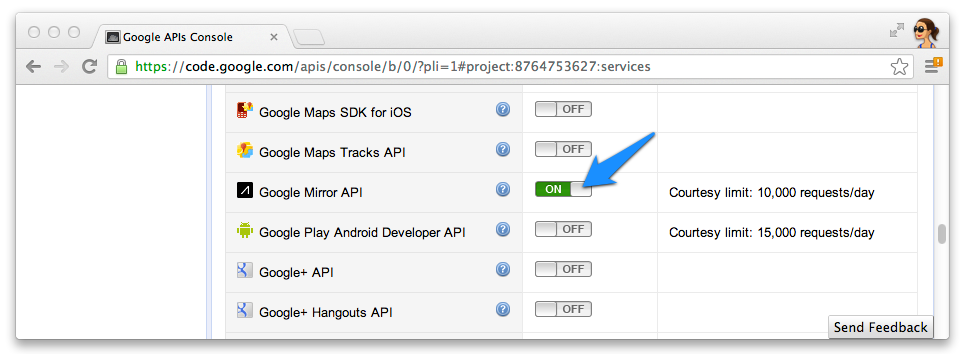
- Clique em Acesso à API e crie um ID do cliente OAuth 2.0 para um aplicativo da Web.
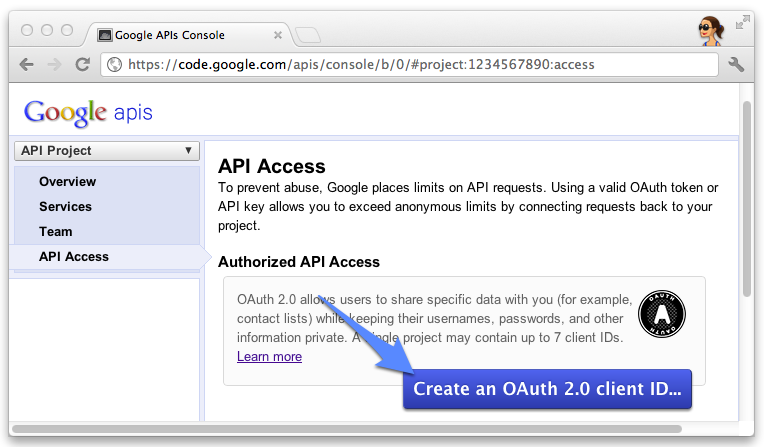
- Especifique o nome e o ícone do produto do Glassware. Esses campos aparecem na permissão de acesso OAuth
é apresentada aos usuários.
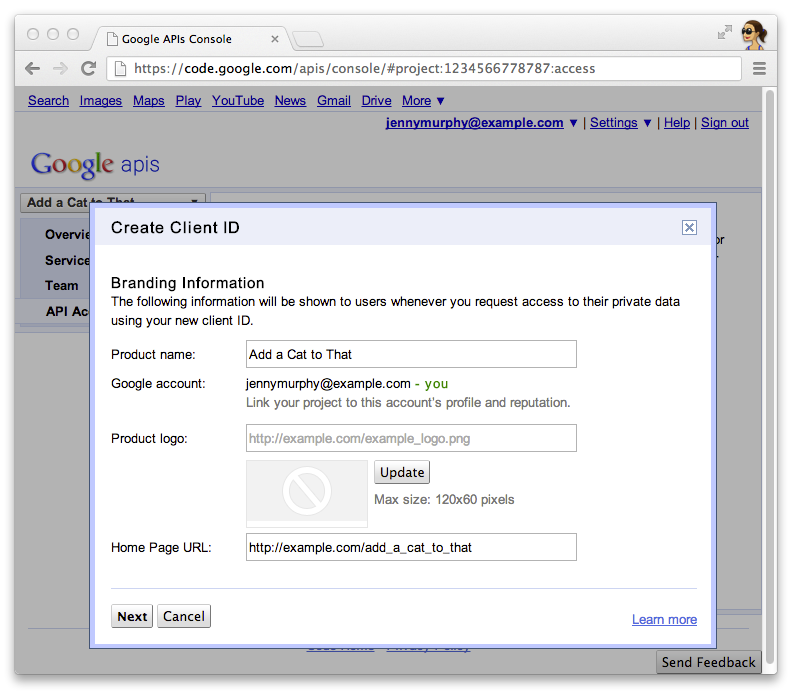
- Selecione Aplicativo da Web e especifique qualquer valor para o nome do host, como
localhost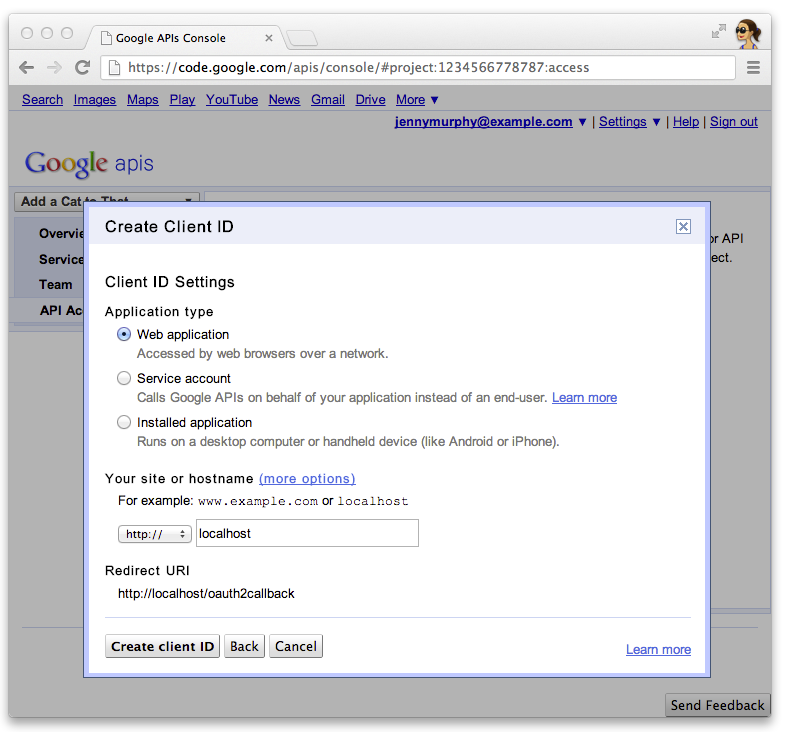
- Clique em Editar configurações... no ID do cliente para especificar URIs de redirecionamento. Especificar
http://localhost:8080/oauth2callbacke o URL de callback do App Engine instância, por exemplo,https://myappengineinstance.appspot.com/oauth2callback.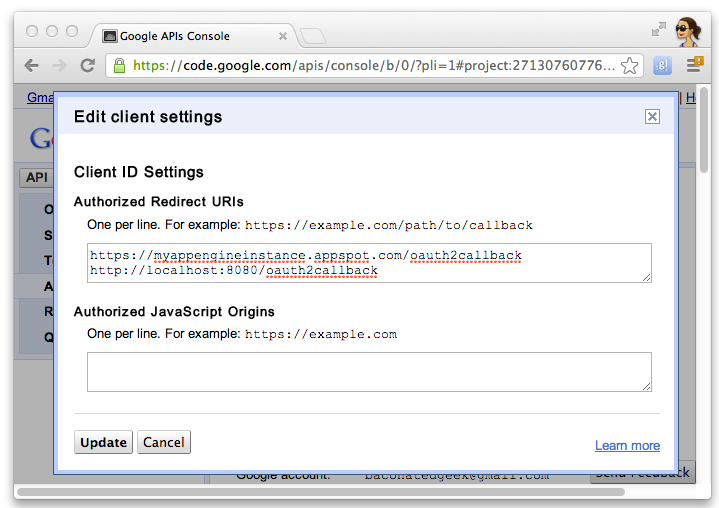
- Anote o ID e a chave secreta do cliente do Console de APIs do Google. Você precisará
para configurar o projeto de início rápido.
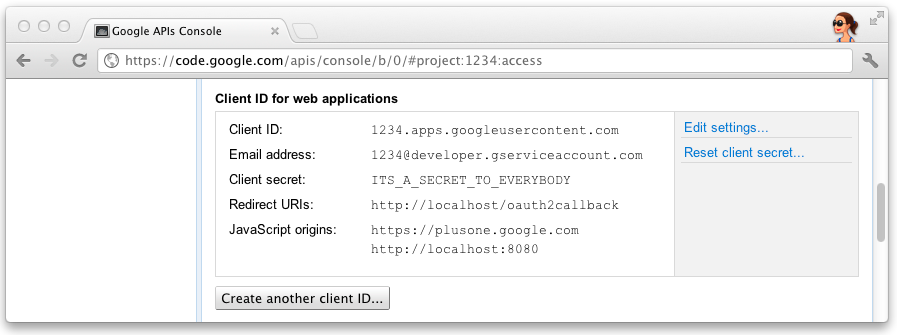
Configurar o projeto
Configure o projeto de início rápido para usar as informações do cliente da API:
- Insira o ID e a chave secreta do cliente em
client_secrets.json:{ "web": { "client_id": "1234.apps.googleusercontent.com", "client_secret": "ITS_A_SECRET_TO_EVERYBODY", "redirect_uris": [ ], "auth_uri": "https://accounts.google.com/o/oauth2/auth", "token_uri": "https://accounts.google.com/o/oauth2/token" } }
- Gere um arquivo
session.secretpara armazenar os cookies de sessão:$ python -c "import os; print os.urandom(64)" > session.secret
- Edite
app.yamlpara inserir o ID do aplicativo do App Engine:application: your_app_engine_application_id version: 1 runtime: python27 api_version: 1 threadsafe: true ...
Como implantar o projeto
Pressione o botão azul Implantar na interface de inicialização da GUI do App Engine ou execute este shell. para implantar seu código:
$ appcfg.py --oauth2 update .

